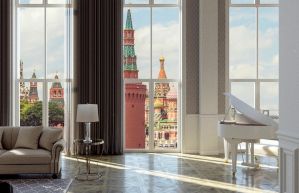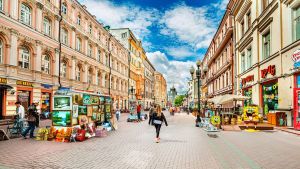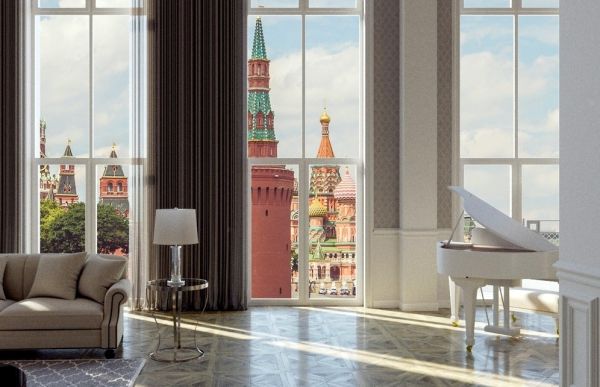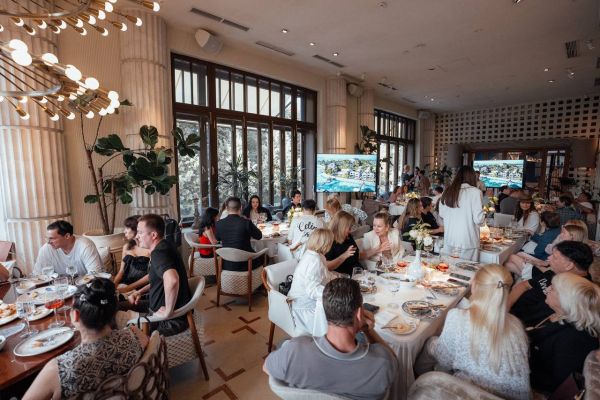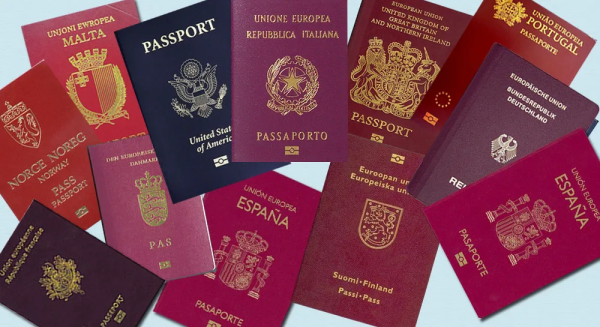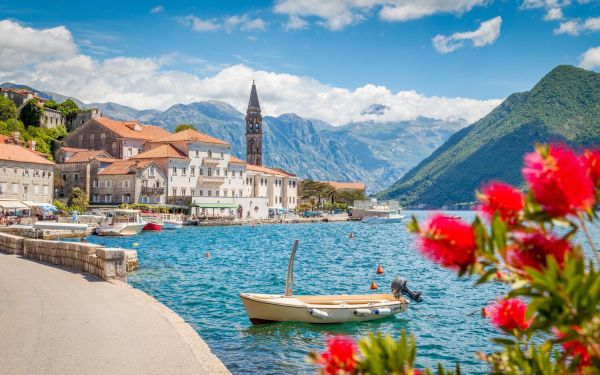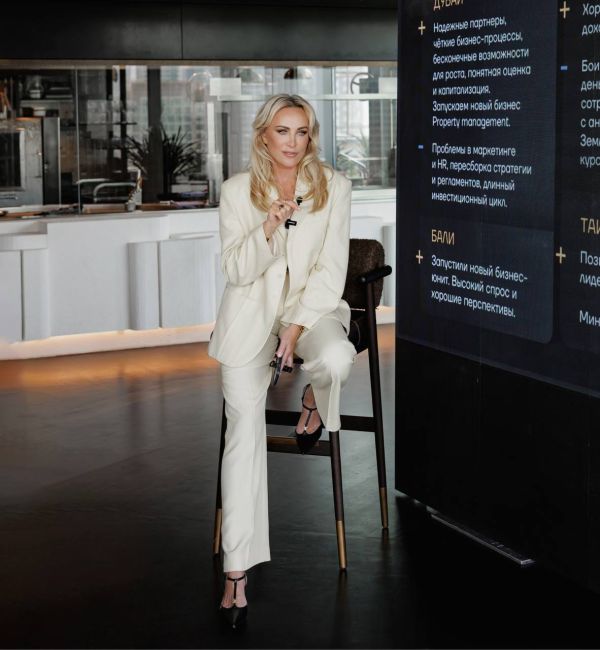Lenta.ru: He flew away, he didn't promise to come back
The year 2014 brought a lot of changes to the real estate market, especially in its ending. The depreciation of the ruble had the most noticeable impact on segments where prices are usually set in foreign currency: commercial real estate and the luxury residential segment. In the rental segment, a new global order has been established.
It's understandable: the sale of luxury real estate is a segment that is quite resilient to crises due to the specific characteristics of its audience. The "elite" of this segment is supported by stable demand - no wonder during the previous crisis, the main players in the luxury market hardly felt any changes. Deals (which are quite rare compared to the economy class) were still happening and their budgets weren't significantly affected. The situation is different for rentals: the audience here is completely different, namely expatriates (before the crisis, their share accounted for 50 to 75 percent of the market) and Russian top management. It goes without saying that both categories have changed their behavior strategy in the realities of 2014: throughout the year, expatriates left Russia, and domestic tenants of expensive real estate also reduced expenses, with many moving to lower class properties. All of this couldn't but affect prices.
"Due to the policy aimed at isolating Russia, every third expatriate left Moscow. The number of American, German, English, Canadian, and Italian tenants has especially decreased," said Elizaveta Nekrasova, CEO of the luxury real estate agency Must Have, specifying that there were already few Canadians and Italians in the luxury rental market before.
"The elite rental market is currently going through difficult times. The main trend is tenant migration. The most significant changes occurred due to the mass exodus of foreign tenants - in the context of international tension, many Western companies closed their businesses in Russia," agreed Irina Mogilatova, Managing Partner of the TWEED real estate agency. "In addition, the rental market is being replenished with finished apartments from the sales market that couldn't find new owners. Buyers today are categorical and demand significant discounts, so unyielding landlords have to reprofile themselves as landlords 'until better times.' At the moment, the situation is as follows: those who price in rubles are getting tenants."
"Deals with rental rates fixed in dollars are currently extremely rare and are only associated with the highest segment of luxury rentals. This situation is very difficult for foreign landlords and owners who do not live in the ruble zone. In early 2015, foreign companies not only reduced the budgets of their employees but also fixed them in rubles, so there are currently many negotiations about changing rental rates for existing agreements and fixing payments in rubles," described the situation Yelena Kulikova, Head of the Department of Owner Relations at IntermarkSavills.
In December 2014, 25 percent more luxury apartments were available for rent than in December 2013, said Yulia Kovaleva, Head of the City Real Estate Rental Department at Kalinka Group, however, in January there was a temporary decrease in volume - by one-third. "This is not only due to the seasonal traditional lull in the rental market," explained the expert. "Many landlords were not ready to quickly adjust to market changes and reduce dollar prices for housing. In February, rental market activity resumed after the seasonal lull, and the number of high-end apartment offerings increased."
As a result, we now observe a tough "renter's market": rates are decreasing, and potential tenants still negotiate and demand ruble prices. "The majority of requests today are for properties with rental amounts between 200,000 and 450,000 rubles. Naturally, many owners want to fix monthly payments in dollars, while tenants insist on payment in rubles. Some landlords agree to this, while others reach a compromise by agreeing to set the ruble exchange rate (for example, not higher than 60 rubles)," provided Oksana Diveeva, Head of the Elite Real Estate Implementation Block at BEST-Novostroy, with her data.
The cost of luxury rentals has decreased by 30-40 percent compared to the same period last year, Diveeva said. "For example, in early 2014, apartments in 'Moscow City,' with an area of 220 square meters, floor-to-ceiling windows, and magnificent views of the center of Moscow, cost $13,000 per month. Recently, this property was rented out for $7,000."
In 2013, you could rent a 250-300 square meter apartment in the "Kopernik" residential complex on Bolshaya Yakimanka for 20-25 thousand dollars, a three-bedroom apartment in the "Crystal House" residential complex for 25-30 thousand, and a one or two-bedroom apartment with expensive furniture in an elite building in the Ostozhenka area for 12-15 thousand, " says Olga Tarakanova, Director of Business Development for the Elite Residential Real Estate Department at Knight Frank. "The current situation is such that in most listings, the price in dollars has been reduced by exactly half. For example, the same three-bedroom apartment in the "Crystal House" can now be rented for 15 thousand per month, and an apartment with one bedroom and expensive furniture in the Ostozhenka area can be rented for 300,000 rubles. A penthouse in a historical building on Patriarch's which was rented for 16 thousand dollars per month in 2013, can now be rented for 400-450 thousand rubles."
"Until October 2014, the price threshold for renting elite real estate was 10 thousand dollars per month. For this amount, you could rent an apartment with good renovation in a Stalinist or pre-revolutionary building, or a small studio in a new luxury residential complex," says Elizaveta Nekrasova. "As a result of the decline in demand and the outflow of expatriates, prices for luxury rentals have decreased on average by 30 percent in dollar terms, and for some apartments, in proportion to the fall of the ruble, by two times."
"Today, we see that all potential tenants insist on fixing only ruble prices in rental agreements, and when renewing contracts, almost all tenants try to lower the rental payment," says Nadezhda Khazova, CEO of the exclusive real estate agency "Usadba". According to the expert, with a pre-crisis average budget of five thousand dollars, you can now rent a four or five-room apartment in the city center, whereas in 2013-2014, before the ruble collapse, it would be a maximum of a three-room apartment in the Western Administrative District or a two-room apartment in one of the Stalinist buildings in the center of Moscow.
Well, three thousand dollars is basically the pre-crisis minimum price of the high-budget rental market, and today it represents the average budget. "If in early 2013 you could rent a small two-room apartment with an area of 80 square meters and modest renovation in the "Golden Keys" residential complex for three thousand dollars and pay extra for a parking space, now in this budget you can rent a 120-square-meter "three-room" apartment with designer renovation in the same residential complex, with the parking space included in the rental price," provides an example from practice Timur Sayfutdinov, CEO of the real estate agency Point Estate.
The experts on the market evaluate the situation differently, but the limit of optimism is that the market is hitting the price bottom now. "By February 2015, the luxury rental market had reached its bottom. For most of the apartments currently offered by owners in the luxury housing segment, prices have already been revised and have become market adequate. The average rental rate for luxury apartments as of March 1, 2015, is 450-500 thousand rubles," believes Julia Kovaleva.
In the next three to five months, it is highly unlikely that there will be an increase in demand for luxury rentals, according to Elizaveta Nekrasova's forecast: "Positive changes are only possible after the final resolution of the Ukrainian crisis and the lifting of sanctions, which will allow our economy to breathe and recover, and, consequently, the well-being of tenants."
"According to our data, in 2014, the luxury rental market lost about 60 percent of its clients," calculates the losses Irina Mogilatova. "At the same time, it gained about 10 percent from Russians who had once planned to buy property but decided to postpone it due to the crisis and "wait it out" in rental properties. I think the active movement of tenants in the luxury rental market will end in a few months, and the situation will stabilize. Prices are unlikely to rise as this would require a shortage of space. Demand will remain at the same level - no new clients are expected. Most likely, the luxury rental market will remain in the same state for the next two years."
Read also
Stay up to date with the latest news
We promise to send only interesting and important articles.
